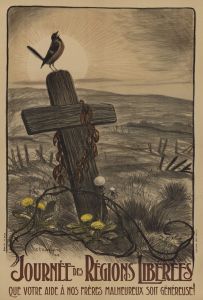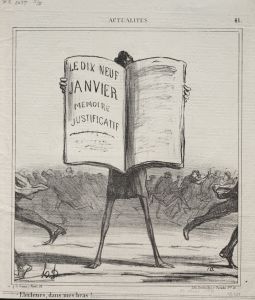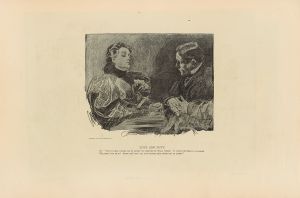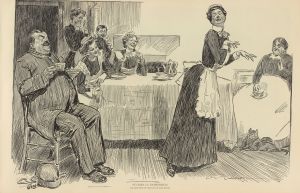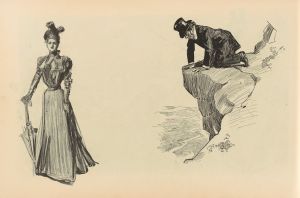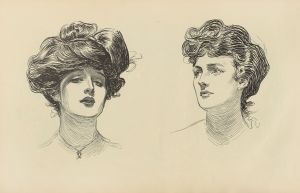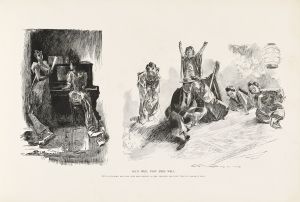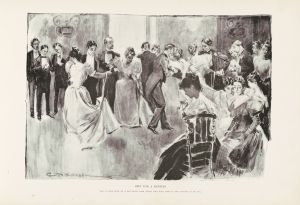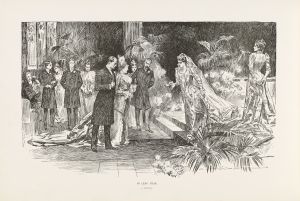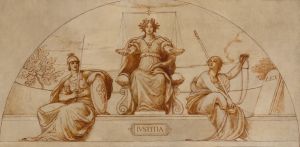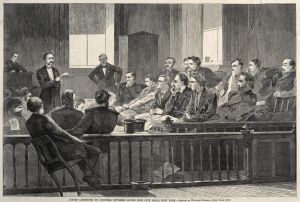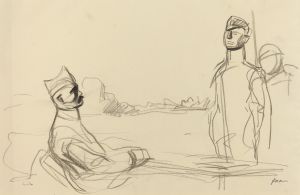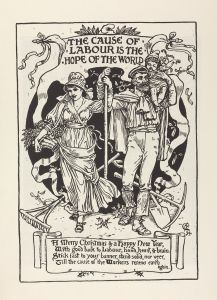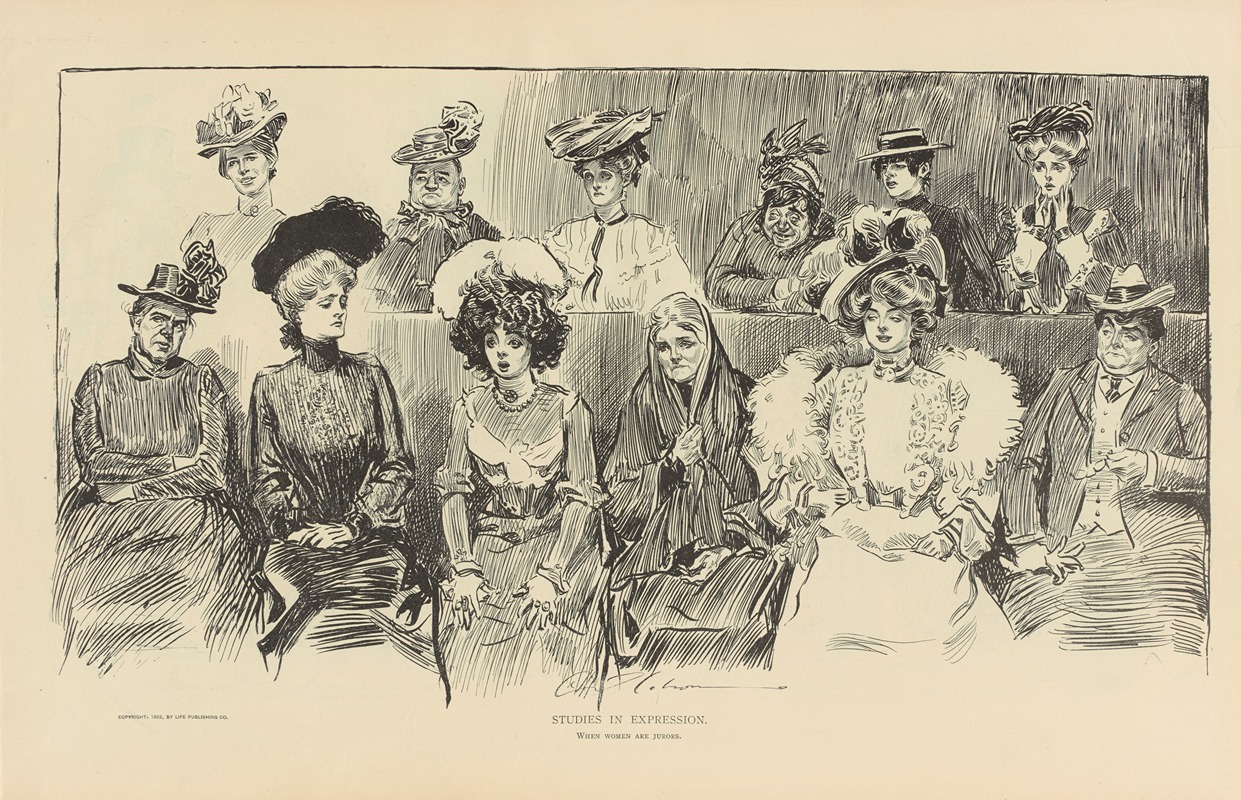
Studies in expression, when women are jurors
A hand-painted replica of Charles Dana Gibson’s masterpiece Studies in expression, when women are jurors, meticulously crafted by professional artists to capture the true essence of the original. Each piece is created with museum-quality canvas and rare mineral pigments, carefully painted by experienced artists with delicate brushstrokes and rich, layered colors to perfectly recreate the texture of the original artwork. Unlike machine-printed reproductions, this hand-painted version brings the painting to life, infused with the artist’s emotions and skill in every stroke. Whether for personal collection or home decoration, it instantly elevates the artistic atmosphere of any space.
"Studies in Expression, When Women Are Jurors" is a notable illustration by Charles Dana Gibson, an influential American graphic artist best known for his creation of the "Gibson Girl," a representation of the idealized American woman at the turn of the 20th century. This particular work was published in 1902 and is part of Gibson's broader exploration of social themes through his art.
The illustration captures a courtroom scene, focusing on the reactions and expressions of an all-female jury. This was a significant and somewhat provocative subject at the time, as women in the United States were not widely permitted to serve on juries until several decades later. The artwork humorously depicts the varied and animated expressions of the women jurors as they listen to the proceedings, highlighting Gibson's keen eye for detail and his ability to convey complex emotions and social commentary through simple line drawings.
Gibson's work often reflected the changing roles of women in society, and "Studies in Expression, When Women Are Jurors" is no exception. By imagining a scenario where women are in a position of legal authority, Gibson subtly comments on the evolving status of women and the ongoing discussions about their rights and roles in public life. The illustration can be seen as both a reflection of contemporary debates about gender equality and a playful exploration of how women might approach the traditionally male-dominated sphere of the courtroom.
The "Gibson Girl" was a cultural icon of the late 19th and early 20th centuries, embodying the beauty, independence, and confidence of the modern American woman. While "Studies in Expression, When Women Are Jurors" does not feature a single "Gibson Girl," it extends the concept by presenting a group of women who collectively challenge societal norms. The piece is illustrative of Gibson's broader body of work, which often used humor and satire to address social issues.
Charles Dana Gibson's illustrations were widely published in magazines such as Life, Harper's Weekly, and Scribner's, reaching a broad audience and influencing public perceptions of gender roles. His work remains significant in the study of American art and culture, providing insight into the social dynamics of his time.
"Studies in Expression, When Women Are Jurors" continues to be appreciated for its artistic merit and its commentary on gender and society. It serves as a historical artifact that captures the spirit of an era when the role of women was undergoing significant transformation, and it remains a testament to Gibson's skill as an artist and social commentator.






